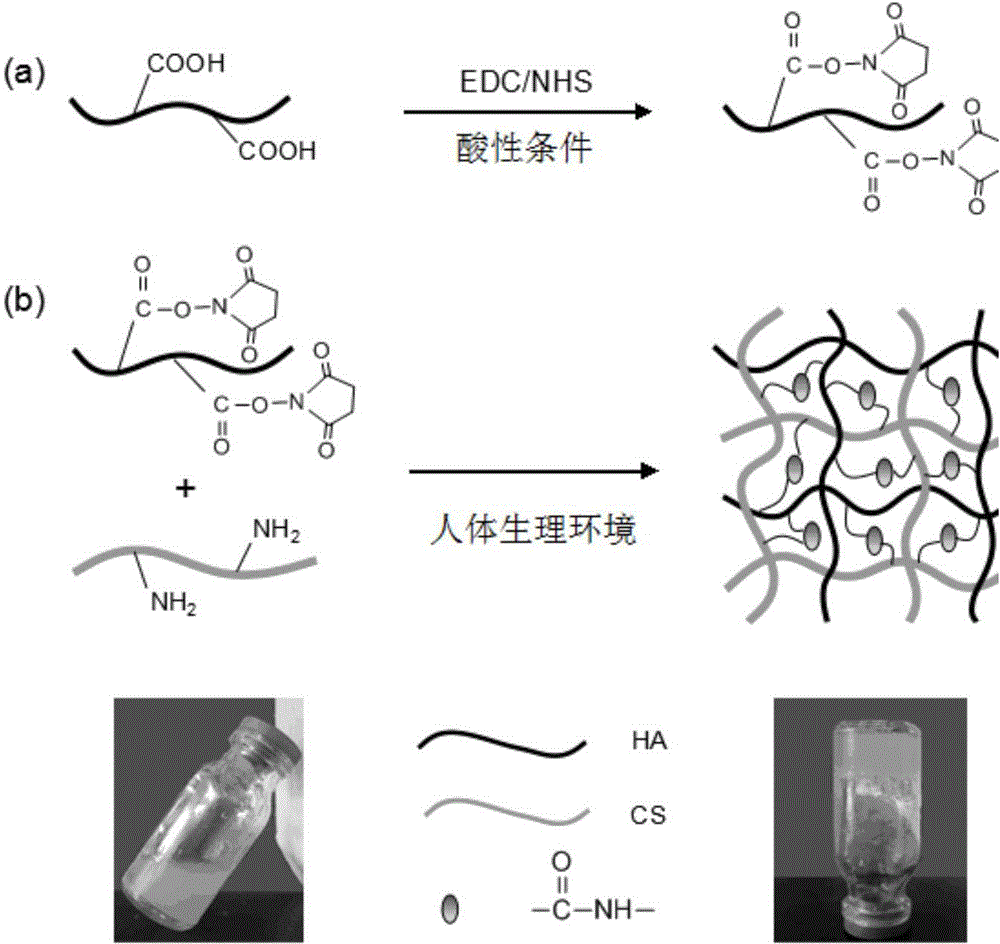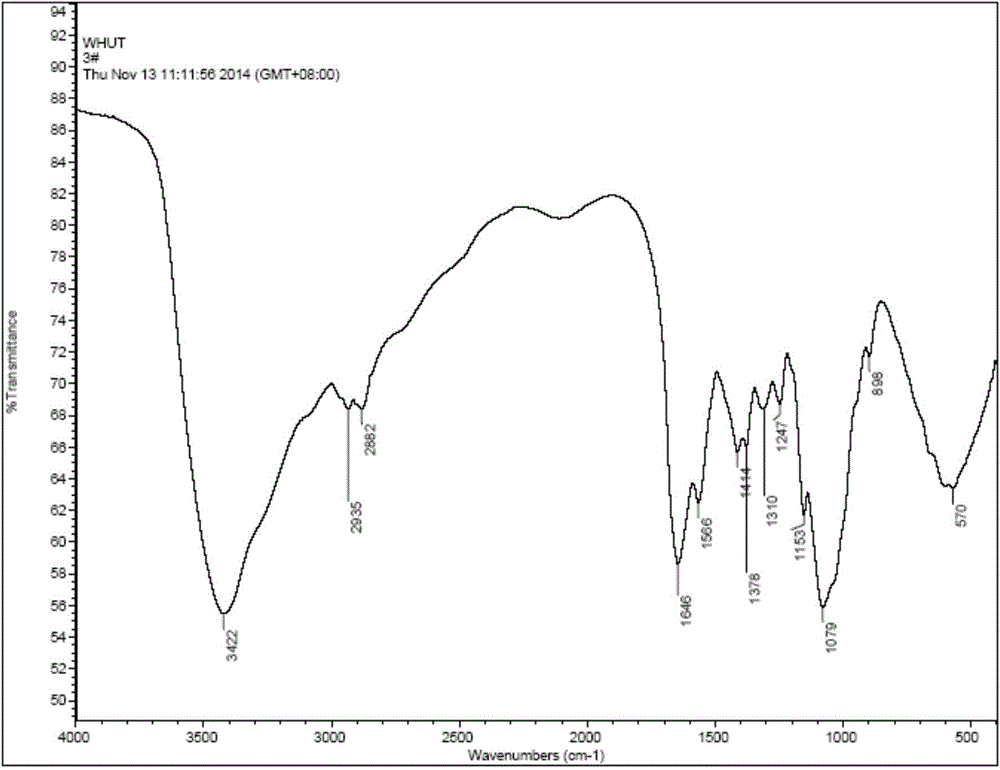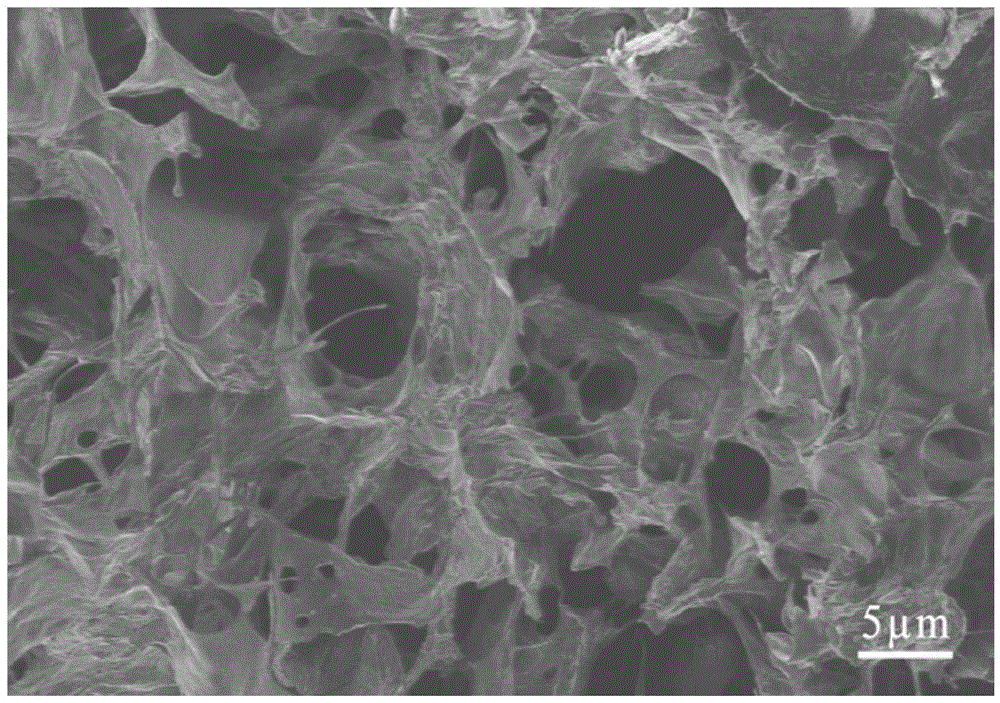NGF (Nerve Growth Factor) injectable in-situ hydrogel as well as preparation and application thereof
A technology of nerve growth factor and water injection, applied in the field of nerve tissue engineering and regenerative medicine, can solve problems such as short half-life, achieve good histocompatibility, avoid trauma, and reduce pain.
- Summary
- Abstract
- Description
- Claims
- Application Information
AI Technical Summary
Problems solved by technology
Method used
Image
Examples
Embodiment 1
[0050] Preparation of HA-CS-NGF injectable in situ hydrogel
[0051] (1) Add 0.1g of HA to 10ml of deionized water in an ice bath at 4°C, stir magnetically for 50 minutes to fully dissolve, then gradually add 0.1g CS hydrochloride, stir magnetically for 1 hour to mix evenly Adjust the pH to 4.7, then weigh a certain mass of EDC and NHS into the above reaction solution, so that the molar masses of EDC and NHS are 30mM and 30mM, respectively, and react for 2 hours to obtain the HA-CS sol.
[0052] (2) Mix the HA-CS sol prepared in (1) with 0.5ml of 0.5μg / ml NGF solution at 4°C, and stir for 30min to make it evenly mixed.
[0053] Structure and morphology characterization of HA-CS-NGF injectable in situ hydrogel
[0054] Adjust the pH of the above-prepared system to 7.4 and place it in a constant temperature water bath at 37°C (simulating the physiological environment of the human body) until the sol in the bottle cannot flow completely, then vacuum freeze-dry for 12-48 hours be...
Embodiment 2
[0061] Preparation of HA-CS-NGF injectable in situ hydrogel
[0062] (1) Add 0.2g of HA into 10ml of deionized water in an ice bath at 4°C, stir magnetically for 50min to fully dissolve, then gradually add 0.1gCS hydrochloride, stir magnetically for 1h to mix evenly Adjust the pH to 5.4, then weigh a certain mass of EDC and NHS into the above reaction solution, so that the molar masses of EDC and NHS are 70mM and 30mM, respectively, and react for 1 hour to obtain the HA-CS sol.
[0063] (2) Mix the HA-CS sol prepared in (1) with 0.5ml of 0.75μg / ml NGF solution at 4°C in a certain ratio, and stir for 30min to make it evenly mixed.
[0064] Structure and morphology characterization of HA-CS-NGF injectable in situ hydrogel
[0065] Adjust the pH of the above-prepared system to 7.4 and place it in a constant temperature water bath at 37°C (simulating the physiological environment of the human body) until the sol in the bottle cannot flow completely, then vacuum freeze-dry for 12-...
Embodiment 3
[0074] Preparation of HA-CS-NGF injectable in situ hydrogel
[0075] (1) Add 0.2g of HA to 10ml of deionized water in an ice bath at 4°C, stir magnetically for 50min to fully dissolve, then gradually add 0.3gCS hydrochloride, stir magnetically for 1h to mix evenly Adjust the pH to 6, then weigh a certain mass of EDC and NHS into the above reaction solution, so that the molar masses of EDC and NHS are 10mM and 10mM, respectively, and react for 2 hours to obtain the HA-CS sol.
[0076] (2) Mix the HA-CS sol prepared in (1) with 0.5ml of 1μg / ml NGF solution at 4°C in a certain ratio, and stir for 30min to make it evenly mixed.
[0077] Structure and morphology characterization of HA-CS-NGF injectable in situ hydrogel
[0078] Adjust the pH of the above-prepared system to 7.4 and place it in a constant temperature water bath at 37°C (simulating the physiological environment of the human body) until the sol in the bottle cannot flow completely, then vacuum freeze-dry for 12-48 hou...
PUM
| Property | Measurement | Unit |
|---|---|---|
| Aperture | aaaaa | aaaaa |
Abstract
Description
Claims
Application Information
 Login to View More
Login to View More - R&D
- Intellectual Property
- Life Sciences
- Materials
- Tech Scout
- Unparalleled Data Quality
- Higher Quality Content
- 60% Fewer Hallucinations
Browse by: Latest US Patents, China's latest patents, Technical Efficacy Thesaurus, Application Domain, Technology Topic, Popular Technical Reports.
© 2025 PatSnap. All rights reserved.Legal|Privacy policy|Modern Slavery Act Transparency Statement|Sitemap|About US| Contact US: help@patsnap.com



